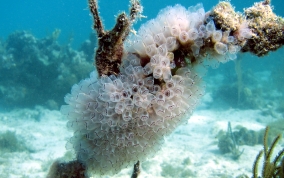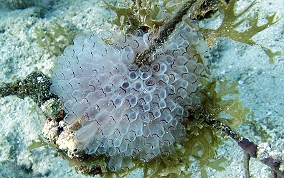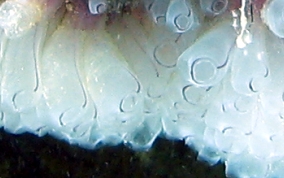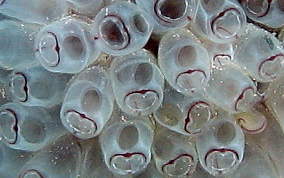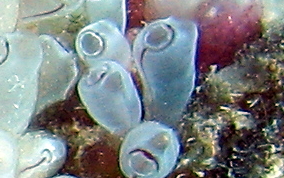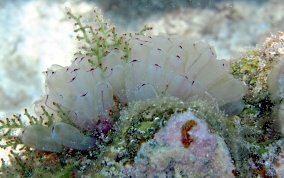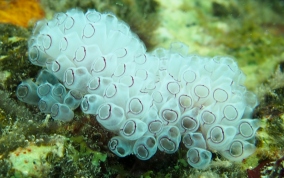Painted Tunicate
Clavelina pictaThere are inconsistencies in the various species of these "bulb" tunicate s. Their colors and markings vary and not enough study has been done do establish a good scientific identification without a microscopic examination. Bulb tunicate s do have some similar characteristics. For instance, the shape and location of their siphons and their characteristic of growing in clusters of individuals. The species Clavenila picta is called the "Painted " tunicate and their bulbs or tunics are transparent and have shades of white, red or purple in their siphon rims and internal organs. Although they look like simple organisms their life cycles are fairly complex. Tunicates start out much like tadpoles, free swimming with a tail. They have what is called a notochord (a primitive backbone) and a nervous system. When they mature, however, they loose their tails, their notochord and most of their nervous system, affix themselves to rocks or other objects and form colonies.
The first row of pictures was a cluster in about 10 feet of water, the second row of pictures in two feet of water, the third row in about four feet of water and the last rows in the mangroves in couple feet of water. Individually their small size makes them easy to overlook, but large clusters make them more noticeable.
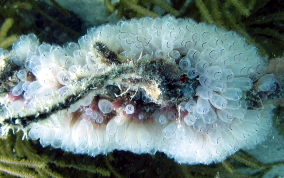
Painted tunicate
